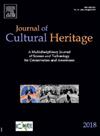Setting up a methodology for restoring degraded daguerreotypes using UV lasers and atmospheric non-thermal plasma cleaning techniques
IF 3.3
2区 综合性期刊
0 ARCHAEOLOGY
引用次数: 0
Abstract
Since the early years of the development of daguerreotypes – the first commercial form of photography made public in 1839 – cleaning procedures have been necessary due to their tendency to tarnish. Cleaning daguerreotypes is challenging, and conventional methods often result in undesirable effects or prove impractical, especially for hand-colored plates. In recent decades, advanced techniques, such as laser and plasma cleaning, have been optimized for tarnish removal. However, their effectiveness in removing other substances, such as by-products of previous cleaning treatments, has not been evaluated. To address this issue, we investigated the efficacy of laser and atmospheric non-thermal plasma cleaning on two 19th-century daguerreotypes exhibiting two different degradation conditions: one with typical tarnish, and the other with a complex layer composed of cyanides, calcium carbonate, and an organic compound, likely produced during a previous cleaning attempt. This work reports systematic tests using visible (VIS) and ultraviolet (UV) lasers emitting at four different wavelengths: Nd:YAG (532 nm, 355 nm), KrF excimer (248 nm), and ArF excimer (193 nm). All the lasers operated in the nanosecond regime, except for the KrF excimer laser, which was also tested with femtosecond (500 fs) pulse duration. This is the first report of results using the 248 nm wavelength in both ns and fs regimes for daguerreotype restoration. For comparison, we also applied atmospheric non-thermal plasma cleaning to both types of degradation. The experiments allowed us to assess the advantages and limitations of both techniques, showing that both are suitable depending on the specific surface condition. Additionally, we evaluated a combined cleaning strategy that involved laser and wet cleaning with two different substances – distilled water and an EDTA solution – to optimize the cleaning outcomes. To make an informed selection of the parameters and evaluate treatment efficacy, we characterized the chemical composition and morphology of the daguerreotypes and their degradation products before and after cleaning using optical microscopy, μ-Raman spectroscopy, and SEM-EDS. Besides the identification of the degradation products, the analytical results provided a critical review of previous literature on laser cleaning of daguerreotypes and supported the determination of the best experimental conditions for the safe removal of degradation layers from the surface of daguerreotypes.

建立了一种利用紫外激光和大气非热等离子体清洁技术恢复退化达盖尔银版的方法
自从达盖尔银版法(1839年问世的第一种商业摄影形式)发展的早期以来,清洗程序就一直是必要的,因为它们容易变色。清洗达盖尔银版法是一项挑战,传统的方法往往会导致不良的效果或被证明是不切实际的,特别是对于手工上色的印版。近几十年来,先进的技术,如激光和等离子体清洁,已经优化了去污。然而,它们在去除其他物质(如先前清洁处理的副产品)方面的有效性尚未得到评估。为了解决这个问题,我们研究了激光和大气非热等离子体清洗在两个19世纪达盖尔银版上的效果,它们表现出两种不同的降解条件:一种是典型的无光,另一种是由氰化物、碳酸钙和有机化合物组成的复杂层,可能是在之前的清洗尝试中产生的。本工作报告了使用四种不同波长的可见光(VIS)和紫外(UV)激光发射的系统测试:Nd:YAG (532 nm, 3555 nm), KrF准分子(248 nm)和ArF准分子(193 nm)。除了KrF准分子激光器外,所有激光器都在纳秒范围内工作,KrF准分子激光器也以飞秒(500 fs)脉冲持续时间进行了测试。这是第一次报道使用248nm波长在ns和fs两种体制下进行达盖尔银版恢复的结果。为了比较,我们还将大气非热等离子体清洗应用于两种类型的降解。实验使我们能够评估这两种技术的优点和局限性,表明这两种技术都适用于特定的表面条件。此外,我们评估了一种联合清洗策略,包括激光和湿法清洗两种不同的物质-蒸馏水和EDTA溶液-以优化清洗效果。为了更好地选择处理参数并评估处理效果,我们使用光学显微镜、μ-拉曼光谱和SEM-EDS对清洗前后的银版照相及其降解产物的化学成分和形态进行了表征。除了鉴定降解产物外,分析结果还对以往激光清洗达盖尔银版的文献进行了批判性的回顾,并支持确定安全去除达盖尔银版表面降解层的最佳实验条件。
本文章由计算机程序翻译,如有差异,请以英文原文为准。
求助全文
约1分钟内获得全文
求助全文
来源期刊

Journal of Cultural Heritage
综合性期刊-材料科学:综合
CiteScore
6.80
自引率
9.70%
发文量
166
审稿时长
52 days
期刊介绍:
The Journal of Cultural Heritage publishes original papers which comprise previously unpublished data and present innovative methods concerning all aspects of science and technology of cultural heritage as well as interpretation and theoretical issues related to preservation.
 求助内容:
求助内容: 应助结果提醒方式:
应助结果提醒方式:


